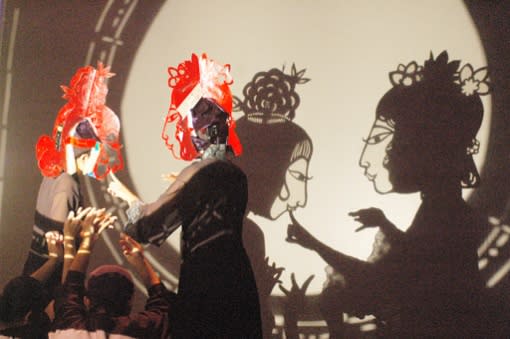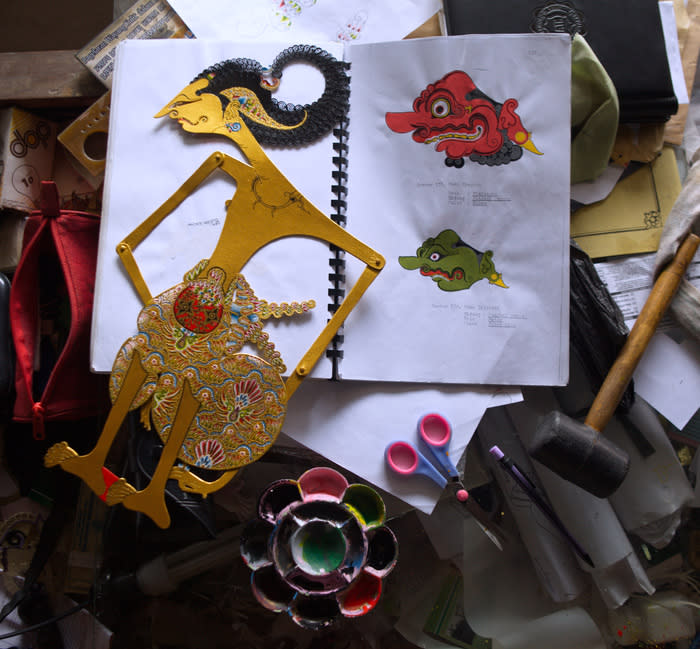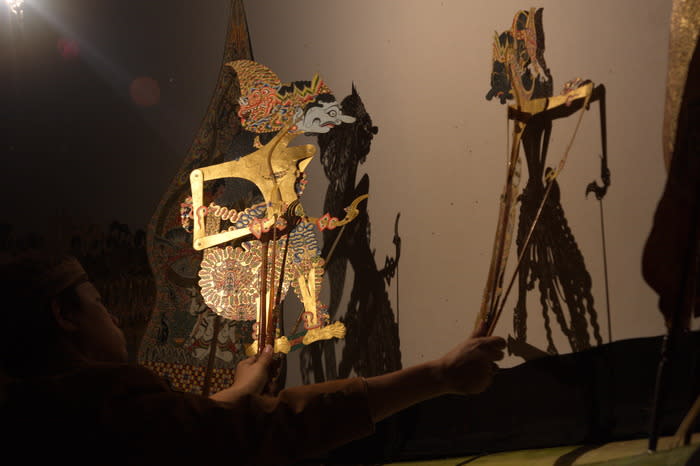Spreading moral messages in modern-day wayang
In an era when wayang performances are barraged with pop music and slapstick comedy, some puppeteers stay true to wayang’s philosophical messages and keep innovating to lure audiences.
Among them is virtuoso dalang (puppet master) Ki Purbo Asmoro, who pioneered the garapan sedalu style, or all-night interpretive style, which features an intense dramatic structure that eliminates repetitive scenes.
In a brief wayang demonstration in Jakarta recently, Purbo and his gamelan ensemble presented the story of devotion and sacrifice in Palgunadi.
Prince Palgunadi comes from a far-away kingdom to learn archery from Durna, a teacher of the Pandawas and Korawas. Following Durna’s refusal to teach him, Palgunadi erects a statue of Durna and learns archery beside it as if being taught by the great teacher.
Palgunadi becomes a skillful archer, but is willing to give up his archery skills when Durna asks him to cut off his thumbs.
Unlike the classical wayang performance that starts with a scene featuring Korawas or Pandawas, Purbo opens his performance with the Palgunadi character, moved expressively to demonstrate that the prince is contemplating.
For Palgunadi and other stories, Purbo writes his own narrations and gamelan accompaniment.
“When I received the performance request, I immediately collected data, devised the order of the scenes and the gamelan music. Just last night, I rehearsed the music with the gamelan ensemble,” he said after the performance at Erasmus Huis in Jakarta.
“I am the one who made the order so I must remember it from A to Z. If I forget, it will be ruined. Thankfully, I got used to it,” he added.
From his base in the Central Java town of Surakarta, Purbo has traveled around Europe, America and Asia to present his wayang performances, with the assistance of simultaneous English translations by musician and wayang enthusiast Kathryn “Kitsie” Emerson.
When he is not traveling the world, Purbo passes on his knowledge to his students at the Indonesian Fine Arts Institute (ISI) in Surakarta.
His storytelling technique is not something for dalang who lacks skill and imagination, Purbo said.
“I can teach them the concepts of my wayang style, but success in performing it depends on their intellectual skill. They should be able to turn the scene structure and make suitable narrations with the right word choice,” he said.
Born in 1961 to a sixth-generation family of dalang, Purbo, amid his innovations, maintains the tradition to have food for thought in his wayang performances, which are based on two Indian epics, Ramayana and Mahabharata.
“It depends on every dalang, but I will always try to be a dalang who passes on virtuous messages in his art. It is OK to have entertainment here and there in a performance, but the essence is still the moral messages,” he said.
“In this modern world, many dalang utilize wayang as mere entertainment. I am concerned about this, but I can’t blame them as they are just trying to earn a living.”
On the other side of the world, California-based performer Larry Reed and his ShadowLight Productions incorporates the art of Balinese shadow wayang with various forms of art and technology to create innovative shadow puppet shows.
Having learned Balinese and Javanese wayang in the 1970s, Reed collaborated with local dancers and dalang to create Wayang Listrik, an amalgam of wayang and live performance projected onto a giant screen.
A flickering fire, traditionally used to backlight the puppets, is replaced by colorful lighting.
“Instead of one dalang improvising, we now have seven to 12 shadow casters in an exacting choreography manipulating puppets, lights and scenery. We almost always have live music and often choose stories from local mythologies,” he said in an email.
Reed feels there is a lot that modern people can learn from ancient ways.
“A big part of my job is bringing the past to life in a way that helps the audience to feel connected to a bigger picture than they might have imagined previously.”
Among ShadowLight’s works are Kawit Legong centering on the birth of the famed Balinese Legong dance and Mayadanawa, a half god and half monster of Bali mythology, besides its performances derived from Chinese stories and also the contemporary Ghosts of the River, which touches on the issue of Mexican revolution refugees and narcotic rivalries.
“Personally, I am interested in discovering universal human truths through investigative performing.”
Through ShadowLight Education Program, Reed shares the art of shadow storytelling with schools and colleges in the US, where students and teachers can explore various issues — ranging from African diaspora to lesbian, gay, bisexual and transgender (LGBT) matters.
“As we speak, many students and their families are being evicted from their homes by changing demographics. Others might be experiencing domestic violence or difficulties with authorities or police. At times it is important to offer an escape into fantasy as a way of refreshing the mind.”
The program has reached at least 6,000 students.
While Reed’s work often delivers philosophy or a reflection of current issues, he said it was OK for dalang to use wayang for entertainment.
“Sometimes politicians and bureaucrats want to push artists to deliver a particular message. This rarely has a good outcome. The dalang must follow what he truly believes in. If it’s a moral message, so be it. If it’s pure entertainment, which often means outside of a ritual context, that’s OK too.”
Cahya Hedi, an advisor to Sena Wangi national wayang preservation and development organization, said that wayang innovations, in technical aspects, had developed steadily and managed to regain a wide-range of audience.
“The duration is shortened, the content is condensed and the aesthetical experience is revamped,” said Cahya, a lecturer of puppetry art at the Bandung Institute of Art and Cultural (ISBI).
Like the Javanese buffalo-hide shadow puppet, the Sundanese wooden puppet, wayang golek, has also been transformed, offering more characters and action.
“There are puppets of ancient monsters with a mix of modern popular characters. Dalang Asep Sunandar Sunarya invented a kind of spectacular aesthetical performance in which a puppet can vomit noodles or blow up its head through technical modification.”
While acknowledging the surging popularity of modified wayang, Cahya lamented that some dalang had omitted moral messages from their performances.
“There has been a lot of value erosion in performances. Philosophical and moral messages have been put aside. It is now just pure entertainment.”
Read also:













